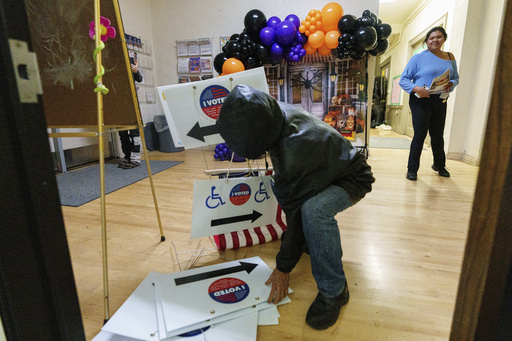
In the week following Election Day, control of the U.S. House remains undecided as numerous races await their outcomes.
Currently, there are over a dozen House races across nine states which have not been officially called, with some so close that they are poised to undergo a recount.
Among these states, California has a significant presence, holding nearly half of the unresolved House races. As of now, the state has reported completion of voting in only about three-quarters of the total ballots cast.
This situation is not atypical; California, being the country’s most populous state, has developed a reputation for delaying the finalization of election results. In contrast, Florida, which ranks as the third-largest state, managed to conclude counting its ballots just four days after Election Day.
A similar trend was observed four years ago when Florida was able to report nearly 99% of its ballots shortly after polls closed. In California, however, approximately one-third of the votes were uncounted by the end of Election Night, with updates on the count continuing well into December.
The disparity in voting count timelines stems from the fact that while the Constitution lays down fundamental guidelines for national elections, the specifics are left to individual states. The regulations devised by state officials impact everything from voting methods to the speed of result announcement, election security, and public confidence in the electoral process.
The difference between the vote counting procedures in California and Florida is largely due to the contrasting priorities set by election officials in the two states.
In California, lawmakers have crafted an election system aimed at enhancing accessibility and encouraging higher voter turnout. This includes automatic mail-in ballots, the ability to submit ballots up until Election Day, and a period for voters to correct any ballot issues. Although this fosters greater participation, it results in a delay in final vote counts soon after polls close.
Marc Berman, a Democratic Assemblymember and author of a law promoting all-mail elections, stated that their main objective is to maximize voter participation. He acknowledged that this approach leads to slower counts, but he believes that taking the necessary time ensures accuracy and inclusivity.
Historically, California has encouraged absentee voting, shifting toward all-mail ballots in recent years. While mail-in ballots increase participation, they require more verification steps, making them take longer to process compared to in-person ballots cast at polling places.
California’s transition to all-mail elections began with legislation in 2016, and this method became standard statewide in 2020, resulting in continuous improvement in voter engagement. Notably, studies have indicated that states that embraced mail-in ballots early on, such as Oregon and Washington, showed elevated voter turnout.
In the past, California has experienced challenges, particularly with a surge of mail-in ballots returned on Election Day, leading to significant delays in counting. Over the last five elections, California has averaged 38% of its ballots being counted after Election Day, and during the recent midterm elections, half of the state’s ballots were counted post-Election Day.
The timelines for counting ballots have also been extended due to recent regulatory changes. Since 2015, California allows mail ballots to be counted if postmarked by Election Day, providing that they make their way to election offices shortly afterward. This year, ballots can be accepted up to a week after the election, meaning that final counts won’t be fully realized until around November 12.
In stark contrast, Florida’s election system is designed for swift and efficient vote counting. Following the contentious 2000 presidential election, which culminated in a Supreme Court ruling, the state sought to standardize its election processes and improve its counting practices.
Florida’s election reforms, initiated by Republican Rep. Bill Posey, focus on ensuring every legal vote is counted while bolstering public confidence in the electoral system. The implementation of optical ballot scanners at each precinct eliminated issues such as “hanging chads,” hastening the voting process by quickly identifying and rectifying any errors on ballots.
Tight deadlines in Florida dictate that absentee ballots must arrive by 7 p.m. on Election Day to be counted, adding to the urgency of the vote counting process. Unlike California, which allows for pre-polling processing of mail-in ballots, Florida officials can begin verifying and preparing ballots for counting before polling places close.
Florida also minimizes the potential for issues with ballots, enabling onsite problem resolution at precincts. Voters who misaddress their mail ballots can rectify signature issues within two days post-election, while California offers voters up to four weeks to address such discrepancies.
These contrasting systems illustrate how varied approaches to elections across states lead to different experiences in counting and reporting votes, reflecting each state’s unique priorities and commitments to voter engagement and efficiency.
